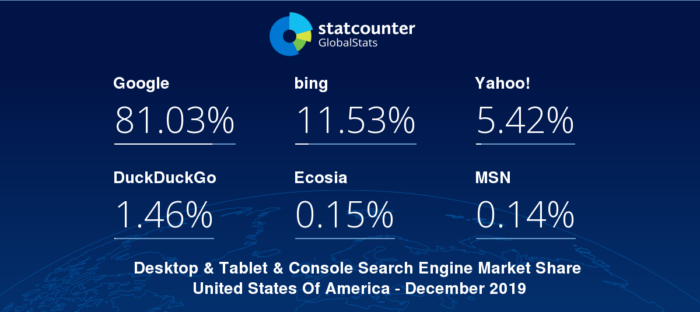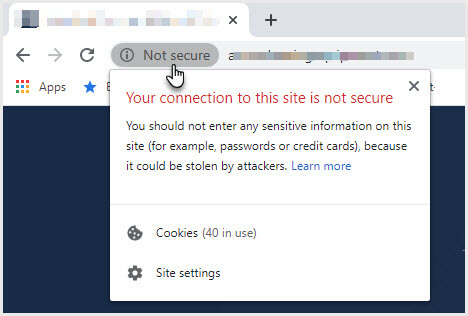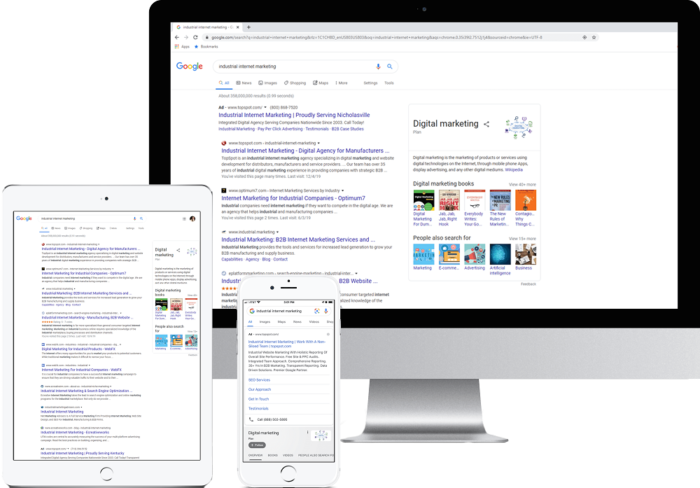February 04 2020
Creating an Integrated Digital Strategy for 2020
Imagine you are going online to find the answer to a question. It could be as simple as what day a holiday falls on this year, or as complex as researching a new vendor. Whatever you are looking for, you are going to have to sift through a lot of information to find it — ads, videos, chatbots, pop-ups and more. You decide if you want to move forward by how fast the page loads, how well it provides the answers you are looking for, and the user experience it provides.
These are all the same things your customers are doing when they search for your products or services. Separating yourself from the rest of the digital noise is not always easy in this current landscape. At TopSpot, we want you to stand out from the rest and the best way to do that is through an integrated strategy that provides the best possible user experience.
And the best overall user experience comes from putting your potential customers and their needs first.
The Biggest Piece of Your Online Presence: Your Website
We first began blogging about it in 2013, and two years later, Google declared mobile-friendliness to be a ranking factor. A site’s ability to adapt to a user’s device is even more important today, with over half of all searches done via mobile, (and that number is only expected to rise).
As more personal information is transmitted online, having a secure and well-designed website becomes even more relevant, even if you don’t currently have an e-commerce website.
If you landed on a website that gave you an error message like the one above, what would you do?
Take our poll below & share your next steps!
Share your thoughts and see the live survey results!
Making sure your pages load quickly is also a part of providing a good experience for users. Even as little as a second or two of delay in loading a page could cause a user to leave your site (four seconds on mobile).
Applying this to your INTEGRATED MARKETING STRATEGY
Take a fresh look at your website. Are you providing the best possible user experience? If your site is not responsive or loads slowly, this is the time to consider what you can do to make it more accessible to your customers. Easy fixes include switching to a secure website, using visual elements strategically, and making sure your video and image files are compressed to help with page loading speed.
Create Quality Content
Good content means engaging users in multiple ways, from text to pictures, infographics to video. Search is becoming more visual, and the ability to read, absorb and scan through information is becoming even more important.
In a recent customer survey, we found that when sourcing a new vendor/supplier, 67% of respondents watch videos during their research process.
Source: TechValidate. TVID: 518-929-820
One of the main ways to engage and provide a great user experience is to create content that speaks to your target audience. Content should be written for your customers and their needs. In fact, 97% of our surveyed customers stated that it was important that a vendor’s website content speaks directly to their industry needs. (Source: TechValidate. TVID: CD2-80F-7D2) This applies to your paid search program too. Your users are expecting a tailored experience these days, from the search landscape to your website.
Understanding the how and why behind how your potential customers’ search is key to creating the content that will cause them to stick. Your content should match that intent, not just address the main words in the search query.
Applying this to your Integrated Marketing Strategy
Well-written and researched content allows for proper keyword density and gives you a chance to create the kind of engaging content that converts. Create better content to engage your users when they visit your site through an Ad Campaign, organic search results, or other means. Are you including video in your content strategy, and if so, have you optimized it for SEO and paid search? Are you incorporating other forms of content on your site and in your digital marketing efforts?
Adjust with the Search Landscape
The user experience of your website begins before their first visit. Have you looked at the search landscape for your business lately? Do you know what ads are in that space, where the organic rankings are appearing on both desktop and mobile? Have you considered the different results that may appear when doing a search in your area versus other cities you’d like to expand into?
An integrated approach is an important consideration when looking at your 2020 digital marketing strategy. Paid Search and SEO work hand-in-hand to increase customer awareness of your brand, your business, and what you have to offer.
As mentioned above, more and more users are conducting searches on mobile devices, so it’s important to realize that your organic presence might not be as easily seen on those devices. Thus, it’s important to incorporate other elements into your marketing strategy.
This can be especially relevant if you are a local business. Local searches account for 46% of all searches, so customizing your content, testing out ad text or even utilizing local service ads for local searches makes for a better user experience for your potential customers.
However, you don’t want to assume local PPC and SEO techniques are only for businesses with a local focus. Businesses with a regional or national presence should also be taking local search into account.
Applying this to your Integrated Marketing Strategy
Your content needs to answer user’s questions, be tailored to your audience, and be optimized for the search engines. Your paid search ads need to point to great content to increase the chances of generating a lead. The same with local strategies – customized local information and relevant content for your PPC campaigns to point to will increase your chances of being found in the local search landscape.
Read our recent blog post on how our Team implemented geo-targeted paid search and website usability strategies for a nationwide manufacturer and grew their online and offline leads by 120%!
It’s Not Just Google
Though Google has the biggest market share overall, they are not the only game in town. Bing is an important part of the search landscape as it powers the searches done using Siri on Apple devices in addition to Amazon Fire and Echo. It is also the default search platform on multiple devices in addition to the web browser, Firefox. Users can access Bing search results from places like their Windows Search box in newer versions of Microsoft Office.
Duck Duck Go is also not be discounted, having doubled its users in the past year. And search doesn’t just happen in a traditional search engine: Amazon and YouTube are also places where users start their research.

In 2018, Google had 92.51% of the global share, Bing had 2.45%, and Yahoo had 1.64%.
Applying this to your Integrated Marketing Strategy
By recognizing that you are not just trying to appeal to the users of Google’s search engine, your marketing strategy should focus on creating the best possible content for your customers. Clear content that answers a user’s question is what’s likely to get you ranked on search engines besides Google and Bing.
What to Take With You into 2020
If your customer isn’t already the center of your digital marketing strategy, they should be. The user is going to continue to be the focus of any effective integrated strategy. Content and SEO will work hand-in-hand with PPC to form a cohesive plan to reach and convert target customers. If you are still viewing your digital marketing through separate lenses, now is the time to look again and plan for a clearer vision of 2020.



